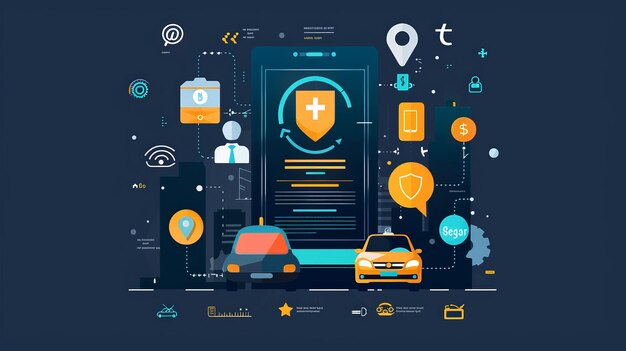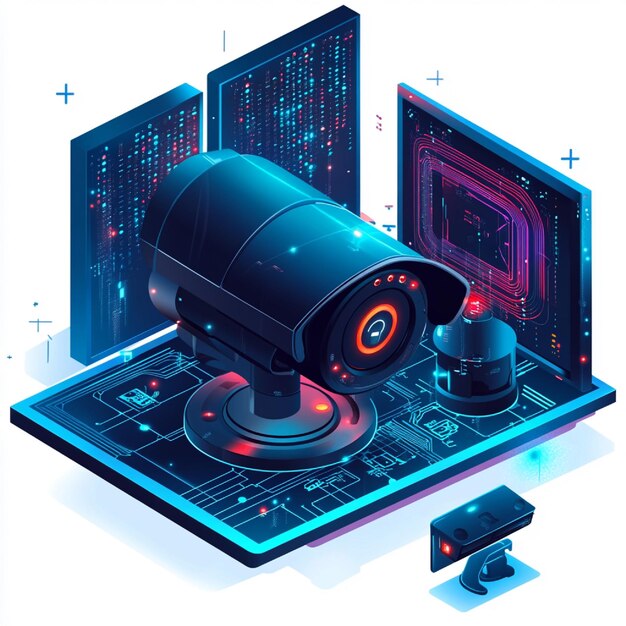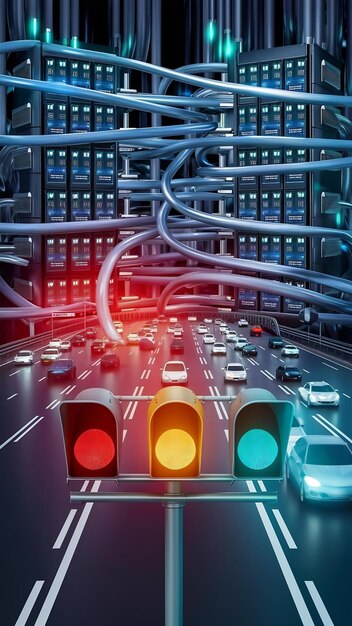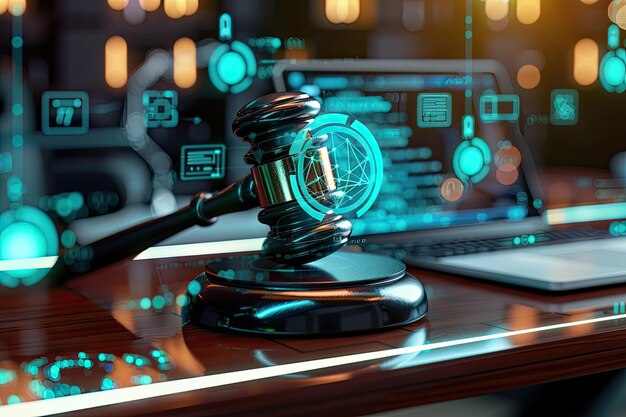Unprecedented Surveillance: How License Plate Readers are Building a Database of Political Signs and Bumper Stickers
In the digital age, privacy concerns have taken on a whole new dimension. One of the most controversial tools being used for mass surveillance is the license plate reader (LPR) technology. LPRs are devices that scan and record the license plates of vehicles as they pass by, often in public spaces such as streets or parking lots. While proponents argue that this technology aids in law enforcement and traffic management, critics raise serious concerns about the potential misuse of this data.
Building a Database
When an LPR scans a license plate, it collects more than just the number. It also captures the date, time, and location of the scan. This information is then stored in a database, creating an extensive record of a vehicle’s whereabouts. Moreover, LPR vendors often sell this data to third parties, including private investigators and marketing firms. The implications of this are alarming.
Political Signs and Bumper Stickers
Political signs and bumper stickers are a common sight during election season. However, they can now be seen as potential targets for surveillance. As LPRs capture the location of vehicles, they also inadvertently record where these political symbols are displayed. This information can be used to build a database of political affiliations, potentially infringing on individuals’ right to privacy and freedom of expression.
Privacy Concerns
Privacy advocates argue that this mass collection and sale of data without individuals’ consent is a violation of their privacy. They also raise concerns about the potential for misuse, including targeted political campaigns, stalking, and identity theft.
Legal Implications
Despite these concerns, there is currently a lack of clear regulations governing the use of LPR data. Some argue that this data falls under the protection of privacy laws, while others claim it is not covered. The legal implications of this technology are still being debated and will likely shape the future of its use.
Moving Forward
As the use of LPR technology continues to expand, it is essential that we consider the potential implications for privacy and civil liberties. It is crucial that regulations are put in place to ensure that this data is collected, stored, and used ethically and responsibly.

Introduction
License Plate Readers (LPR), also known as Automatic License Plate Recognition systems, have become an integral part of modern
law enforcement
and
traffic management
. These advanced technologies, which can read, process, and store license plate information in real-time, offer numerous benefits for improving public safety and efficient roadway operations.
Brief History of LPR Technology
The concept of Automatic License Plate Recognition (ALPR) technology was first introduced in the late 1980s. Initially, systems used to recognize only a few characters at a time due to their limited processing capabilities. However, advances in computer technology, image processing algorithms, and optical character recognition techniques led to significant improvements in LPR systems’ accuracy and performance over the years. By the late 1990s and early 2000s, LPR technology had become a reliable tool for law enforcement agencies and traffic management systems worldwide.
Importance of Understanding Capabilities and Implications of LPR Systems
As LPR technology continues to evolve, it is crucial for individuals, organizations, and policymakers to understand the capabilities and implications of these systems. While LPR can provide valuable insights and assistance in various applications, such as identifying wanted vehicles, locating stolen cars, or managing traffic flow, it also raises concerns related to privacy, data security, and potential misuse. A clear understanding of these aspects will help ensure that LPR systems are used effectively, ethically, and in compliance with relevant laws and regulations.

How LPR Systems Work
Description of the Hardware and Software Components of an LPR System
An License Plate Recognition (LPR) system is a sophisticated technology designed to automatically identify vehicles and their owners based on their license plates.
Camera and Optical Character Recognition Technology
At the heart of an LPR system is a high-resolution camera equipped with optical character recognition (OCR) technology. The camera captures images of passing vehicles, while the OCR software analyzes these images to extract license plate numbers with remarkable accuracy.
Database and Data Processing Capabilities
The LPR system is linked to a comprehensive database that stores vehicle and owner information. When the system captures an image of a license plate, it cross-references this data against the database to find any matches. This process is rapid and efficient due to advanced data processing capabilities.
Processing and Analyzing Data Collected by LPR Systems
Matching Plates to Vehicles and Owners
Once the LPR system captures an image of a license plate, it uses various algorithms to read and decode the numbers. The decoded data is then compared against its database to find matches, whether that be the vehicle owner or the registered vehicle itself. This can occur in real-time for incoming vehicles, or the data can be analyzed historically for vehicles that have passed through before.
Real-time and Historical Data Analysis
LPR systems are capable of processing data in real-time, enabling them to quickly identify potential violations or suspicious activity. For instance, if a vehicle with an expired registration is detected, the LPR system can alert the relevant authorities instantly. Conversely, historical data analysis allows for trend identification and longer-term insights into traffic patterns and vehicle behavior. This information can be invaluable for law enforcement, parking management, and traffic control operations.

I Collection of Political Data through LPR Systems
Overview of the collection and storage of data beyond traditional vehicle information: Licence Plate Recognition (LPR) systems have evolved from being mere tools for tracking and managing vehicular traffic to becoming sophisticated data collection devices. Beyond the standard vehicle information, these systems now capture and store
images and text
extracted from political signs and bumper stickers. This transformation has significant implications for the collection and use of political data.
Examples of reported instances of political data collection through LPR systems: One of the earliest documented cases of political data collection through LPR systems was in the United States during the 2008 presidential election. Campaigns used the technology to identify supporters based on their vehicle registrations and campaign sign placements. This practice was later adopted in several other countries, including the United Kingdom, during elections in 2015 and 2017.
Political affiliation tracking in the US and abroad:
LPR systems have been used for political affiliation tracking, enabling parties to identify voters’ political leanings. This information can then be used for targeted campaigning, voter outreach, and even fundraising. In some cases, this data has been sold to third parties, raising concerns about privacy and potential misuse of the information.
Potential misuse of collected data:
The potential for misuse of collected political data is a significant concern. For example, the information could be used to manipulate elections, intimidate voters, or engage in targeted harassment campaigns. Moreover, there is a risk that this data may fall into the wrong hands, leading to unintended consequences and harm.
Concerns and debates surrounding the collection and use of political data through LPR systems: The collection and use of political data through LPR systems have sparked intense debates around issues related to
privacy
, bias and discrimination, and the potential for misuse of information. Critics argue that this practice invades individuals’ privacy, as their political beliefs are often considered personal information. There is also concern that the data may be biased or discriminatory, as certain groups may be overrepresented or underrepresented in the datasets.
Furthermore, there is a lack of transparency and accountability surrounding the collection and use of political data through LPR systems. Campaigns and other entities may not disclose how they obtain this information or how it is used, making it difficult for individuals to protect their privacy or challenge any potential misuse of the data.
In conclusion, the
collection and use of political data through LPR systems
raises important questions about privacy, bias, and potential misuse. As the technology continues to evolve, it is essential that safeguards are put in place to protect individuals’ rights and prevent any unintended consequences or harm.

Legal Framework and Regulation of Political Data Collection through LPR Systems
Overview of relevant laws and regulations in the US and other countries
Fourth Amendment protections against unreasonable searches and seizures
In the context of political data collection through License Plate Recognition (LPR) systems, it is essential to understand the legal framework surrounding privacy and data protection. In the United States, the Fourth Amendment protects citizens against unreasonable searches and seizures of their property. This amendment has been interpreted to include a reasonable expectation of privacy in one’s vehicle, making the collection and use of data obtained through LPR systems a subject of ongoing debate.
State and federal privacy laws
Several state and federal privacy laws also play a role in regulating the collection, storage, and use of political data through LPR systems. These laws include but are not limited to: The Video Privacy Protection Act (VPPA), the Children’s Online Privacy Protection Act (COPPA), and various state-specific data breach notification laws.
Current approaches to regulating the collection and use of political data through LPR systems
Case law and legal interpretations
The collection and use of political data through LPR systems have been addressed in various court cases, with differing outcomes. For instance, in the case of Smith v Maryland, the Supreme Court held that there is no reasonable expectation of privacy when data is disclosed to third parties, which could potentially impact LPR systems’ legal status. However, other cases have been more privacy-protective, such as the California Supreme Court decision in People v Dugas, which established that license plate data is subject to a reasonable expectation of privacy.
Proposed and enacted legislation
Several legislative proposals aim to regulate the collection and use of political data through LPR systems. For example, in the United States, the Fourth Amendment Is Not a Suggestion Act (S. 1472) would amend the Electronic Communications Privacy Act to require a warrant for accessing historical location information, potentially impacting LPR systems’ data collection practices. Additionally, the Driving While Privacy Act (S. 2594) would prohibit the use of license plate reader data for commercial purposes without explicit consent from the vehicle owner.
Challenges in regulating the collection and use of political data through LPR systems
Technological challenges
Regulating the collection and use of political data through LPR systems poses significant technological challenges. For example, the massive amounts of data generated by these systems necessitate sophisticated data management and analysis capabilities. Additionally, the integration of LPR data with other databases, such as criminal records or voter registration information, can complicate privacy concerns.
Constitutional and legal complexities
The constitutional and legal complexities surrounding the collection, storage, and use of political data through LPR systems are also substantial. Ongoing debates about Fourth Amendment protections, the scope of reasonable expectations of privacy, and the application of state and federal privacy laws to LPR systems highlight the need for continued legal clarification in this area.

Conclusion
Summary of the implications, both positive and negative, of political data collection through LPR systems:
Public safety and security benefits:
Political data collection through License Plate Recognition (LPR) systems can significantly enhance public safety and security. LPR technology can help law enforcement agencies identify stolen vehicles, locate suspects involved in criminal activities, and even prevent potential terrorist attacks by monitoring suspicious vehicles.
Privacy concerns and potential for misuse:
However, the collection and use of political data through LPR systems raise serious privacy concerns. The vast amount of data collected can be misused, leading to potential invasion of privacy, identity theft, and even discrimination based on political affiliations. Moreover, there is a risk of government overreach, as this data can be used to target certain individuals or groups for surveillance without due process.
Recommendations for addressing the challenges and risks associated with political data collection through LPR systems:
Technological solutions:
To address the privacy concerns, it is essential to invest in technological solutions that can protect individual privacy while allowing for the beneficial use of LPR data. This could include implementing encryption, anonymization techniques, and access controls to ensure that only authorized personnel can access the data.
Legal and policy frameworks:
Legal and policy frameworks are also crucial to regulate the collection, storage, and use of political data through LPR systems. This could include establishing clear guidelines for data collection, retention, and sharing, as well as implementing robust data protection laws that ensure individual privacy is respected.
Public awareness and education:
Lastly, public awareness and education are essential to ensure that individuals are informed about how their data is being collected and used through LPR systems. This could include transparent communication from law enforcement agencies, as well as public education campaigns to help individuals understand their rights and the importance of data privacy.
Call to action for further research, dialogue, and advocacy on the issue of LPR systems and political data collection:
The debate surrounding political data collection through LPR systems is far from over. It is crucial that we continue to engage in dialogue and advocacy on this issue, both at the policy and technological levels. Further research is needed to explore best practices for data collection and use, as well as the potential impacts of LPR technology on privacy and civil liberties. Together, we can work towards a future where LPR data is used to enhance public safety while respecting individual privacy and protecting civil liberties.
video
